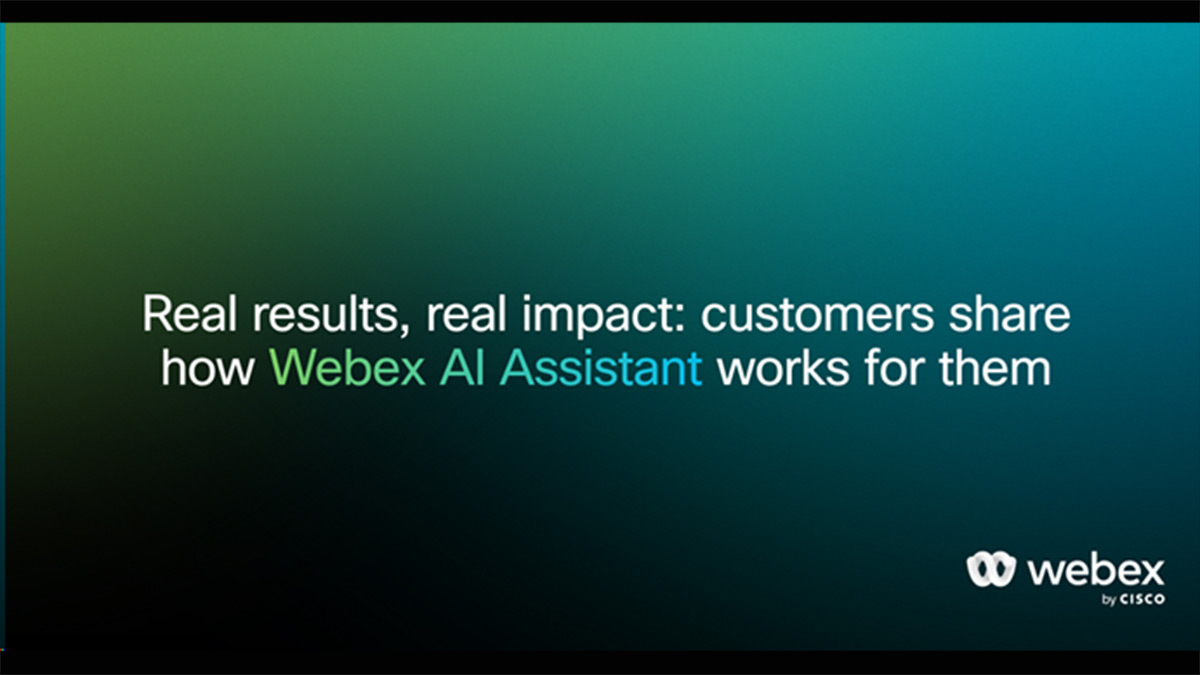Since the COVID-19 pandemic first upended our lives in 2020, hybrid work has come a long way. And many of today’s employees expect to work from pretty much anywhere they choose — at least part of the time.
Return-to-office (RTO) mandates, on the other hand, can conjure negative reactions.
But if leaders get hybrid work right, RTO doesn’t have to mean draconian policies, rigid workweeks, or uninspiring spaces.
Getting hybrid work right isn’t easy though. And creating an office experience that justifies the commute, sparks creativity, and draws top talent means rethinking everything from leadership and work/life balance to technology and office design.
Today, however, there are still substantial gaps in perception between employers and employees — especially around RTO policies, hybrid-work flexibility, and technology.
This was supported by Cisco’s 2025 Global Hybrid Work Study — Navigating Hybrid Work Strategies in Evolving Workplaces. Based on a survey of 21,513 employers and employees across multiple industries and 21 markets, the study follows Cisco’s inaugural Global Hybrid Work Study in 2022, which saw more hybrid work arrangements than we do today.
And while the latest report highlights employees’ positive sentiments around office time, it also reveals significant disconnects with employers regarding the perceived benefits of current workplace policies. These tensions are even more pronounced with top performers and Gen Z employees. Their preferences lean heavily toward flexibility: the freedom to work remotely to maximize productivity or maintain work/life balance — or in an office when face-to-face connections are called for.
“We have to remember, flexibility doesn't mean that everyone is working remotely all the time,” said Fran Katsoudas, Cisco’s EVP and chief people, policy, and purpose officer. “It means that there's an ability to take into consideration the needs of every individual. And one of the big ah-hah's from the study is that flexibility makes top performers perform better.”
But even top performers see the merits of the office.
“When we make the office about mentorship, connection, and career development,” Katsoudas added, “people understand the value of being there. But when we lean solely into the work, it’s a less compelling value proposition.”
- Build trust (and productivity will follow): In Cisco’s study, employers consistently overestimated the positive impact of return-to-office policies on employee productivity and wellbeing. From the employee perspective, 77% believed that rigid return-to-office mandates were driven by a lack of trust. And only 39% of employees agreed that those mandated office days boost productivity. Another disconnect was around the well-being of workers under return-to-office mandates. Only 28% of employees see these mandates as beneficial to their well-being, compared to 42% of employers. However, that does not mean that employees never want to go to the office. Ninety-two percent believe that community and collaboration are key aspects of office culture.
- Draw them back with office experiences. Financial considerations influence both employers and employees’ perspectives on the office, but in different ways. Fifty-seven percent of employers cited real-estate and building-maintenance expenses as the primary influencer of their organization’s preferred work model, while 40% of employees complained about commuting costs. But while employees overwhelmingly prefer flexible choices in where they work, they also enjoy in-person connections. For leaders, that means opportunities to bring teams together in-person for high-impact activities (just not every day). By lessening the call for everyday office presence, they can also counter the need for larger office spaces (and their high rents) and leverage smart-workplace tech to optimize the space they have. Moreover, employees are clear on what benefits they seek while in the office, everything from in-person collaboration and mentorship to driving innovation through teamwork and fostering a stronger connection to company culture. Leaders will need to design the in-office experiences that deliver the kinds of unique value that are not as easy to replicate remotely.
- Listen to top talent. In Cisco’s survey, the responses of high performers reveal important insights. These employees expect hybrid-work opportunities, and 78% would even consider leaving a company if the work policies were not flexible enough (only 34% preferred working from the office). Nevertheless, many still saw advantages to spending time in the office — for example, 85% believed it helped their career advancement. Organizations that want to nurture top talent will build autonomy and trust into their work policies, and give those top performers the freedom to grow, connect, and collaborate in whatever way is best for them.
- Address the generational divide. Looking at the perceptions of leaders can offer a window into the challenges many companies are facing. Forty-eight percent of Gen Z employers believe remote work is most productive, while only 28% of Boomer employers agree. On the flip side, 40% of Boomer employers prefer the office versus 28% of Gen Z. As time progresses, the needs of these different groups will change and perspectives on remote versus in-office work will shift, in line with people’s life stages. More flexible policies that acknowledge these changes and allow for individual considerations can increase loyalty and retention. Technology can also serve to bridge the gap. Fifty-six percent of Gen Z employers believe digital transformation and collaboration tools are critical, compared to just 34% of Boomers. And a strong majority (64%) of Gen Z employees stressed the value of wellness-related technology in the office (for example, to manage lighting and air quality for an optimal environment). Gen Z are tomorrow’s top performers (if not today’s). Smart organizations will nurture their talents and provide them the flexibility and support they expect.
- Embrace emerging tech. Gen Z may stand out, but they are not the only group that expects great, trusted technology. For example, a full 90% of employees see value in collaboration tools. However, only 32% of employers are investing in the high-grade collaboration technology that supports flexible, hybrid work models. At the same time, AI is driving a revolution in the workplace (wherever it may be). Yet only 44% of employers are investing in it. Organizations that invest in the networking, security, AI, and collaboration foundation to adequately support this future hybrid workforce will draw top talent and stay competitive. Their workers will be both more flexible and productive.
Cisco’s findings represent a clear wake-up call for leaders and organizations. As we have seen, the gap between employees and employers is especially pronounced among Gen Z and top-performing respondents, who are the most optimistic about technological advancements and the most vocal in demanding technology investments. These trends will only accelerate as Gen Z workers take on more senior roles.
Communication is a big part of leadership, but only 36% of employees felt that return-to-office mandates were explained clearly. Katsoudas sees this as an opportunity for leaders to implement clear discussions on what work models are best for a particular team or individual.
“It’s so important for leaders to really lead here and drive the conversation with their team members, asking, how do we work best as a team?” she said. “How do we improve our performance? What is working and what’s not? What outcomes are we working toward and how often do we need to be together to reach them? When we have these kinds of discussions, it’s natural to broach the topic of where it makes the most sense to work.”
To remain competitive, organizations must act now to meet the needs of the evolving workforce.
Your employees — especially the most talented and productive — expect to work from anywhere. And “anywhere” includes the office, which will remain an essential hub for work, collaboration, social interaction, team building, and more. These and other workers will only be at their best if organizations address the trust gap — and bring their technology, leadership, work policies, and office spaces up to the standards of the creative, collaborative, flexible workforce of the future.





